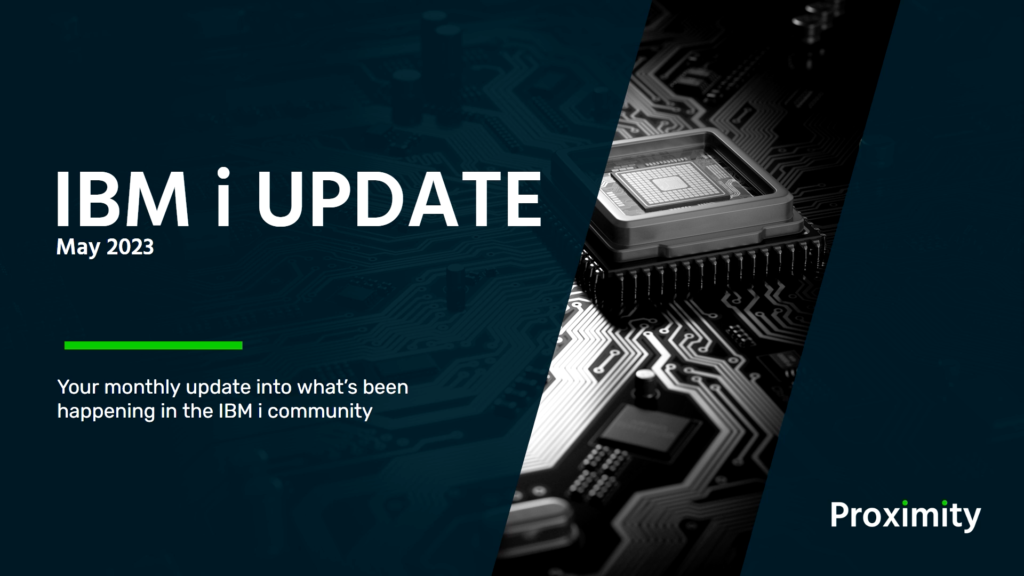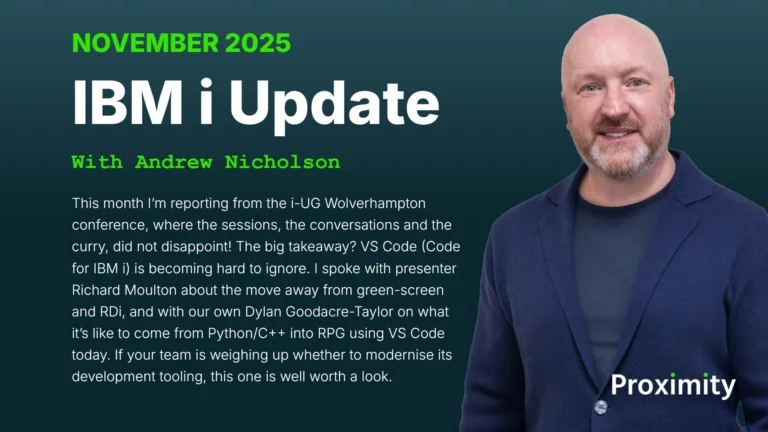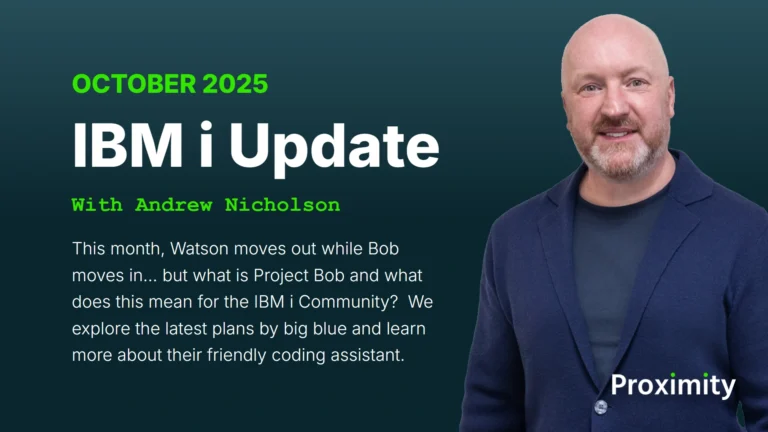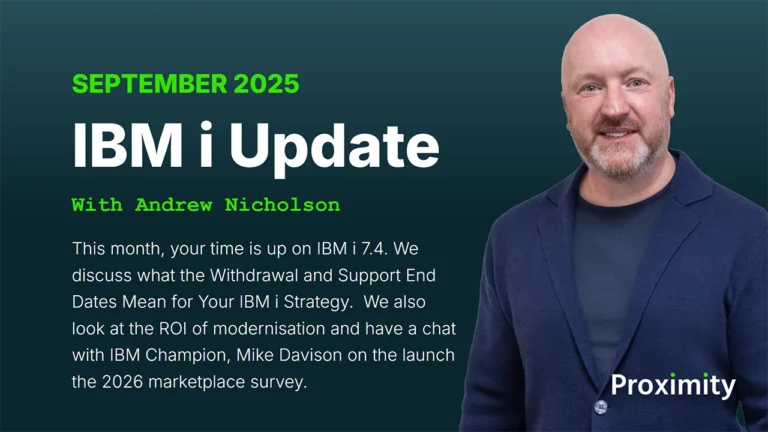Welcome to your #IBMi update, your monthly update into what’s been happening in the IBM i community, with Andy Nicholson from Proximity. You can watch the video below or read the full article underneath.
Watch the Video:
Full Article:
This month, we discuss the latest technology refresh, performance gains in Power 10, some (more) facts on modernisation and IBM replacing roles with robots!
April saw Big Blue announce the Technology Refreshes for IBM i, top of the list for ‘new stuff’ is updates to the IBM i Navigator web client which now feature integrations with the Advanced Job Scheduler, support for DNS configuration and support for the Integrated File system too.
In addition, there have been improvements to the SQL query engine with IBM stating that internal tests have demonstrated that complex queries will now run upto 20% faster – always useful.
For the Java lovers out there, there are now more options for Java application servers, so, if you never liked Websphere or Tomcat, this opens a raft of new possibilities.
And finally, a big enhancement to PowerHA as previously you could only replicate data from one primary box to one secondary system using the geographic mirroring data replication protocol, but now, with a six-node deployment you can replicate up to five secondary systems – all very good.
April also saw some of the first reported real world results on what performance gains can you expect from Power10. In this example as drawn by Ben Williams of Chili IT, they replaced a POWER8 with Power10.
Now, as part of a controlled experiment, they matched the licensed cores and utilised the existing storage subsystem. What they saw as highlighted here, is that core performance on Power 10 is superb. The Green line shows the trend line running at 10%.
This is in comparison to the red line on the Power 8 which is nearer 30%.
Or to put into layman’s terms, the findings are that Power 10 is driving down application run times without any need for code changes – improving performance at lower energy costs. A great justification for those thinking about upgrading.
Recently, EvolveWare conducted a survey of 200 IT leaders running on IBM i and System Z. Their aim was to learn their motivation for pursuing modernisation projects.
Top of the list, which was chosen by 40% of survey takers, was to boost employee productivity.
In a close second was to retire mainframe infrastructure on 37% followed by reducing legacy code on 36% and eliminating security vulnerabilities fourth on 31%.
What’s interesting with the results of the survey are the drivers of the project.
Internally, the IT Team will be looking at managing the day-to-day infrastructure while management will be more focused on operational efficiencies and improving costs.
While both important, both are entirely different and if a business focuses too much on the latter, they run the risk of reduced capability due to key staff retiring and a shortage of skilled resources – the survey found this key drive not to be even in the top five…
https://www.itjungle.com/2023/04/03/why-modernize-applications-the-reasons-might-surprise-you/
Finally, we have an announcement from IBMs CEO that they would suspend or slow down hiring in back office areas such as human resources.
Their intention is to replace approximate 30% of the 26,000 people in these positions with AI and automation over a five year period.
This didn’t go unnoticed by both tech and mainstream media reporting the risk of AI to thousands of back-office jobs.
At IBM, around 26,000 people currently have roles in these positions.
So, this would amount to around 7,800 staff, however, IBM said much of this reduction would come through retirement and unfilled vacancies, rather than widespread layoffs.





